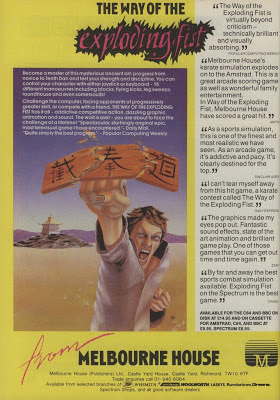Your patience will be rewarded today with a new episode of Chrontendo. Yes, Episode 46 is finally ready.
As always, a high quality h.264 60 frames/sec version may be found on Archive.org here. (or rather, it will be in about a day.) And a streaming version in 30 frames/sec can be viewed on Youtube here. Just like the last episode of Chronsega, it will be available in HD at 720p.
This episode finds us precisely in the middle of 1989, as we cover a clutch of US NES releases from June, followed by July's Famicom releases. As I point out in the video, the popularity of the NES in the United States was nearing its peak at this time. One indication of this was the increasing number of game released for the NES. The ceaseless demand for product, combined with a huge backlog of Japanese games led to a flood of titles for the console in 1989-1990. In June 1989, for example there were around 15 NES games released, four of them US exclusives, compared to six games released in Japan that same month. Of those four games, two were crap, one was simply devoid of any interesting qualities, and the last one was Monster Party.
I've discussed Monster Party before, but it really stands out among the US-only games we've seen so far. Aside from just being really damned weird, Monster Party has a surprising amount of of blood and gore for a game with the Nintendo Seal of Approval on it. My theory? Certain big-name companies with close ties to Nintendo (such as Bandai) did not have to adhere to Nintendo's rules quite as strictly.
.jpg) |
| Monster Party is made of pure nightmare fuel. |
It isn't clear why Monster Party never recevied a Japanese release. As many of you will know, a beta version of a planned Japanese verison of Monster Party was discovered several years ago. The cart has never been dumped/released to public, but we do have this video of the first level, which shows the game's original bosses were blatantly taken from popular movies.
Monster Party also has a shockingly dark ending, which depicts our hero Mark meeting a gruesome death. The developer, Human (i.e.: Bandai's "good" developer, as opposed to Tose) returned to the horror genre 6 years later with Clock Tower. It's interesting to note that Clock Tower was also heavily indebted to a western horror movie, Dario Argento's Phenomenon.
 |
| Mark's rather unsettling fate. |
The other standout game today comes from a publisher with a much better reputation. Willow, from Capcom, is an action-adventure game in the Zelda mode, based on the Ron Howard/George Lucas film of 1988. The movie met with critical indifference and performed underwhelmingly at the box office, but it did receive three videogame adapations: a boring PC game from Mindscape, an solid platformer from Capcom, and the Famicom/NES game. Willow will not win any awards for originality, but from an aesthetic perspective, it easily beats the other Zelda clones we've seen so far. With its muted color scheme, and detailed, animated backgrounds, it's one of the best looking games for the console. The music is also phenomenal. Only the fact that it lacks the originality and freshness of Mega Man 2 or Bionic Commando keeps it from being top-tier Capcom.
 |
| Fantastic presentation makes willow stand out from other Zelda clones |
A few other games also stand out this episode:
Dragon Ninja/Bad Dudes
 |
| The personalized getaway copter is a nice touch. |
Quite frankly, if this game had been released under its Japanese title, Dragon Ninja, and all references to ninjas kidnapping president were removed, hardly anyone would remember Bad Dudes today. In the post Double Dragon/River City Ransom age, Bad Dudes seems just a little old-fashioned. The levels are completely unimaginative, and the same enemies appear over and over in every level. It does retain a certain level of cheesy '80s charm, but when you consider that Final Fight, the arcade Teenage Mutant Ninja Turtles, and Golden Axe all came out in 1989, you realize just how far behind the curve it was.
White Lion Densetsu/Legend of the Ghost Lion
Faria: A World of Mystery and Danger
 |
| Ghost Lion is not the most original game is terms of art direction. |
One odd thing about Legend of the Ghost Lion is that it is reasonably well-documented online; it has a wikipedia page, vidoes on Youtube, and various reviews. Yet no one seems to mention this one important fact: it was based on a movie! Piramiddo no Kanata Ni: White Lion Densetsu was a 1988 film directed by Koichi Nakajima. The director, while hardly a household name, did have at least one other notable credit. He was the first assistant director on Paul Schrader's Mishima: A Life in Four Chapters and was somehow involved in the Ridley Scott/Mike Douglas Japanese crime drama, Black Rain. Unfortunately, I could find virtually no info on the White Lion movie.
 |
| Faria - not the best looking RPG on the NES. |
Faria draws a bit of inspiration from Zelda, but also from Falcom's Ys. The hero/heroine even looks a bit like Aldo from Ys. Faria was developed by Game Arts, who we'd previously encountered as the developer of Thexder. In the 90s they would get a reputation as an RPG company, thanks to the success of the Lunar and Grandia series. Game Arts brings a puckish sense of humor to Faria, with a plot twist involving poisoned caviar and a princess who resembles a caterpillar. Another notable name on the credits is Akihiko Yoshida, a fellow who will turn up as the character designer in many of Yasumi Matsuno's games, such as Final Fantasy Tactics and Vagrant Story.
In terms of bad games, only a couple really stand out.
I've already discussed Beam Software's Airwolf, published by Acclaim. It's a sort of like a worse version of Top Gun, with the awful "land on the aircraft carrier" part replaced with a pointless helicopter landing part. It's not so much bad, as it simply lacks any distinguishing or noteworthy features. It is completely unrelated to the Famicom Airwolf of the US computer game.
 |
| Oof! Faceplant, dude. |
Regular Chrontendo viewers will know of my dislike for Epyx's "Games" series. So I assume you will not be surprised to find out I didn't care for the Rare/Milton Bradly release of California Games? This is the second version of California Games we've covered -- Sega released their own version for the Master System a bit earlier. I still find the game to be totally bogus, dude.
Other games this episode:
Oishinbo: Kyukyoku no Menu 3bon Syoubu
 |
| Food journalists have a lot of run-ins with the police. |
A Japanese style adventure game, based on a food themed manga. We are fortunate enough to a have a solid translation of the game by The Snark. Unfortunately, being a Tose title, Oishinbo is not of the highest quality, with lumpy looking character art and bog-standard game design. Still, how many other video games make you choose the right method for gutting a monkfish and perparing its liver?
Hissatsu Doujou Yaburi
Tenkaichi Bushi Keru Nagūru
.jpg) |
| Tenkaichi Bushi Keru Naguuru doesn't exactly have a diverse roster. |
We have not one, but two fighting game/RPG hybrids this episode! Hissatsu Doujou Yaburi from Sigma Entertainment resembles earlier fighting game hybrids, such as Culture Brain's Hiryū no Ken/Flying Dragon The Secret Scroll games (see Episode 33.) Tenkaichi Bushi Keru Nagūru uses a more RPG-ish top down overworld. It was developed by Game Arts, Masanobu Endo's company, so it has the better pedigree of the two. Neither one, however, works very well as a fighting game, due to the generic characters and slow, unresponsive controls.
Shin Moero!! Pro Yakyuu
Kyuukyoku Harikiri Stadium Heisei Gannenhan
 |
| Shin Moero!! or possibly Kyuukyoku Harikiri Stadium. I forget which. |
Alright, we had two RPGs, two fighting games, so why not two baseball games? Shin Moero!! is the latest in the Tose/Jaleco series known as Bases Loaded in the US. It's the third game in the series, but should not be confused with Bases Loaded 3, which was actually the US version of the fourth Moero!! Pro Yakyuu game. Not only did Shin Moero!! never get a western release, it also dropped the behind-the-pitcher camera from the first two games, and replaced with a weird 3/4 perspective view of the batter and pitcher.
Kyuukyoku Harikiri Stadium Heisei Gannenhan is another entry in Taito's baseball simulation series. Aside from the odd name, the game also features a cool 3D sculpture of a baseball player on the box art. Both games feature wall-to-wall annoying Ōendan music.
Zenbei!! Pro Basket/All-Pro Basketball
Another sub-Double Dribble basketball game hits the Famicom. This one is from Vik Tokai and Aicom, the developer of Jaleco's Hoops. Apparently Aicom couldn't figure out how to program full-court scrolling, ala Double Dribble, since Hoops featured half-court basketball and All-Pro uses a bizarre trick to avoid showing the entire court. When your player crosses the half-court line, the game freezes and the screen goes black for a moment. When everything reappears, the camera has moved 180 degrees and is now facing the other direction. This is annoying and confusing as can be.
Perfect Bowling
 |
| Even in a bowling game, they managed to squeeze in a panty shot. |
A decent, if not particular exciting bowling game from Tonkin House
Igo Shinan
From Hect, an instructional Igo game. Someone must have been buying copies of this thing, since Hect released four sequels for the Famicom.
Shooting Range
 |
| Is it really a good idea to shoot the lollipop out of Frankenstein's hand? |
A US only Zapper game from Tose/Bandai. It's just about the most generic Zapper game imaginable.
There were have it, another Chrontendo. Up next will be Chronturbo 4, which will carry us through June 1989 on the PC Engine.









